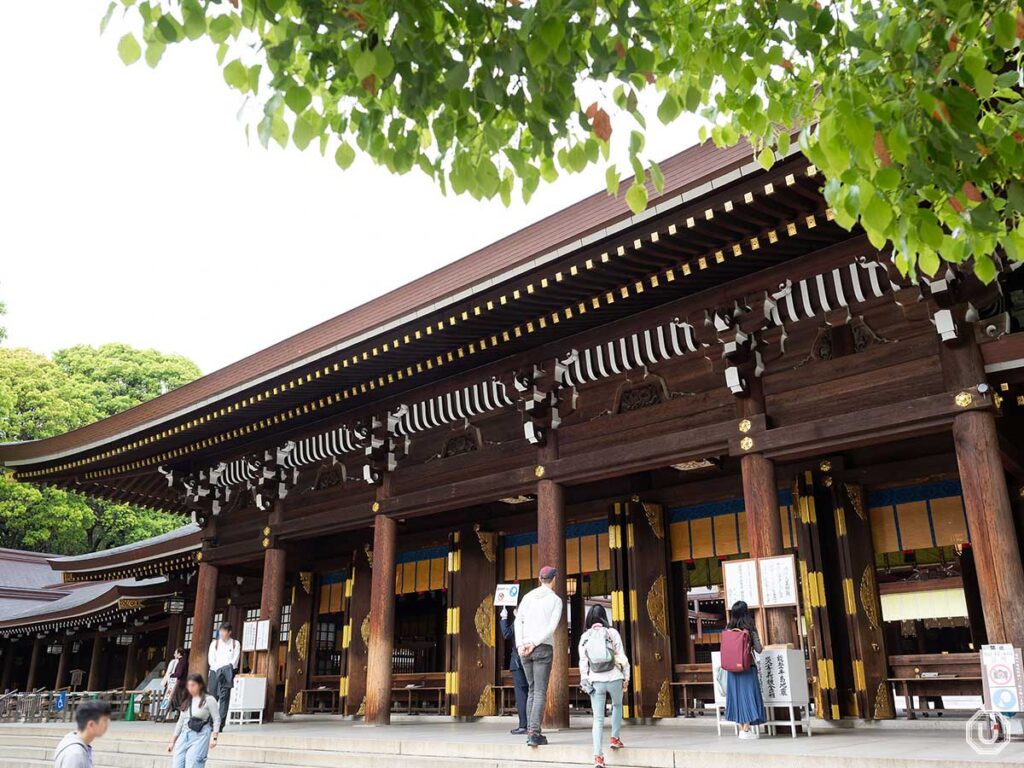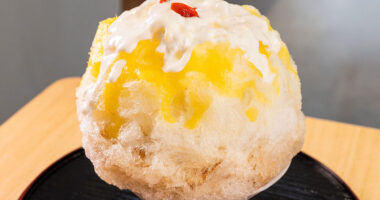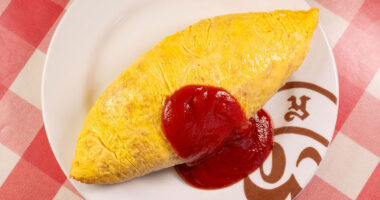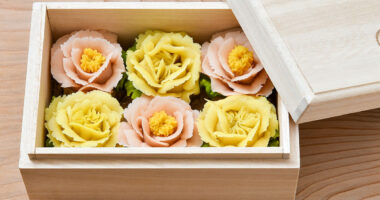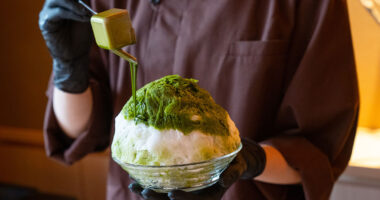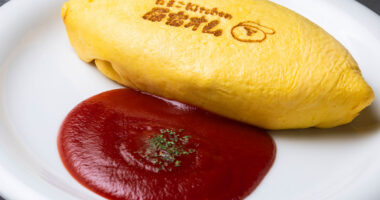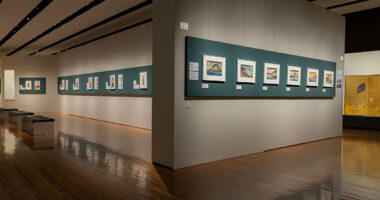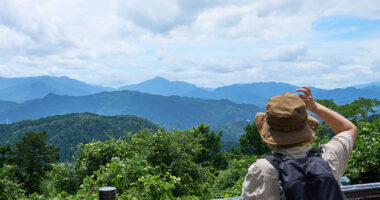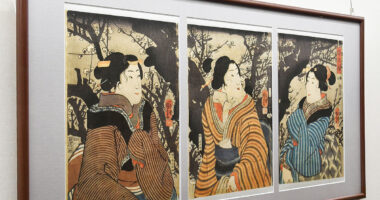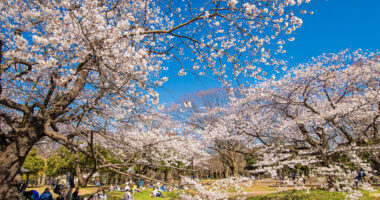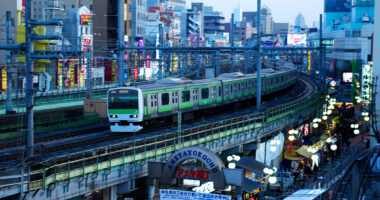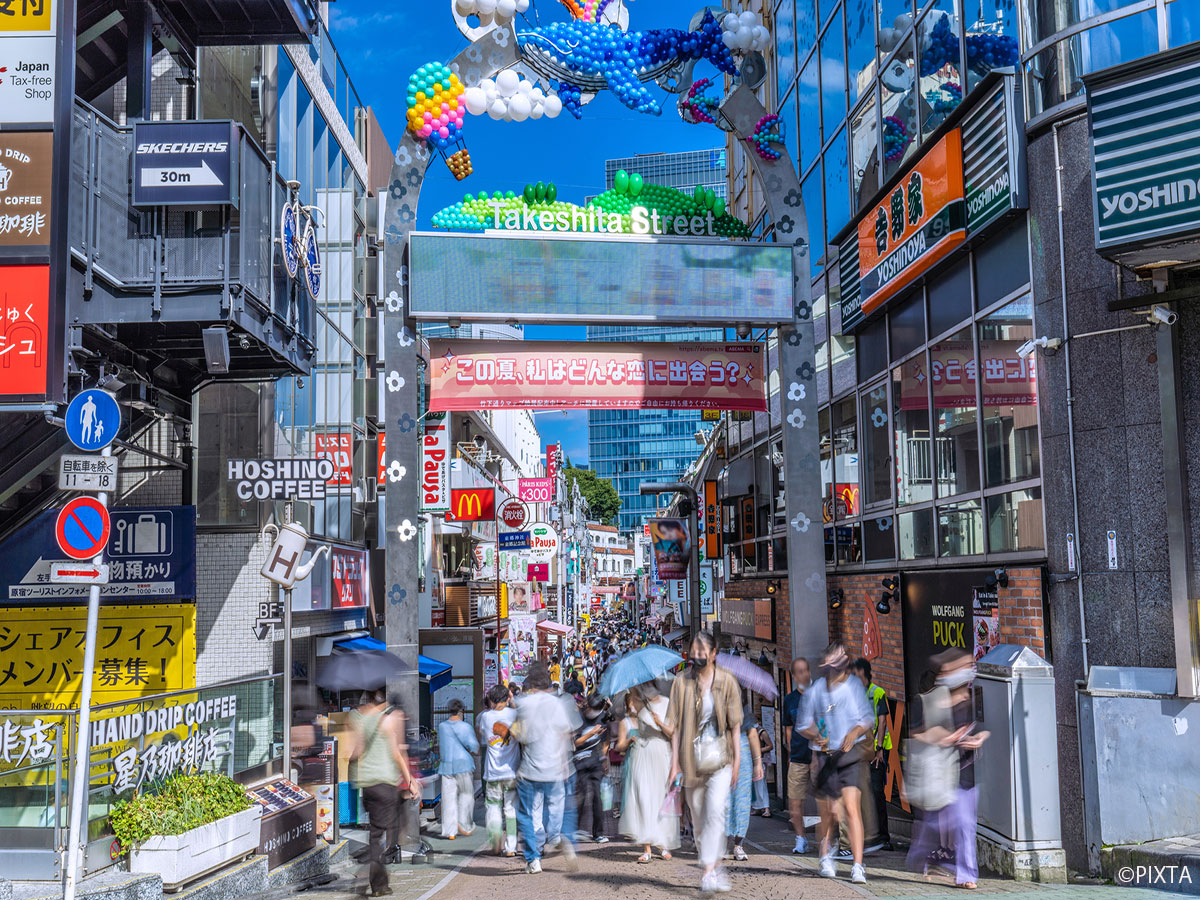Meiji Jingu, a shrine located near Harajuku and Shibuya in Tokyo, is known for having the highest number of New Year’s visitors in Japan. The first visit of the year to a shrine or temple in Japan is a custom known as hatsumōde, where many pray and make wishes for the upcoming year.
The shrine’s vast grounds are so green that it’s hard to believe that you’re in central Tokyo. Around 100,000 trees donated from all over the country are planted, surrounding the main shrine building.
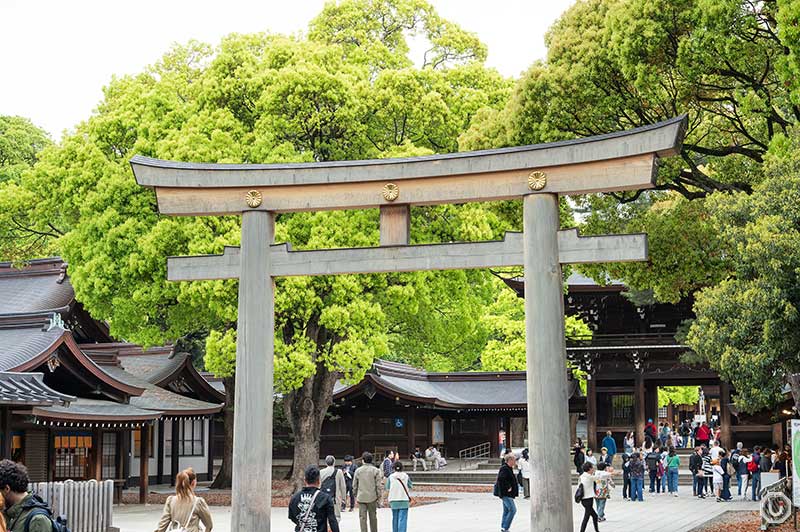
There’s so much to see at Meiji Jingu!
Aside from the main shrine building, the grounds contain gardens, restaurants, cafes, and a museum, Meiji Jingu is packed with highlights to see.
In addition to worshipping, visitors can explore many places at Meiji Jingu, so those who want to see everything should allow 1-2 hours to take it all in.
Rows of huge sake barrels line the approach to Meiji Jingu
Meiji Jingu is most easily accessible from four stations – Harajuku Station, Meiji-jingumae ‘Harajuku’ Station, Yoyogi Station, and Sangūbashi Station.
Entering from the Harajuku Station side torii gate, you’ll come to a path called Minami-sandō (meaning “the southern approach road” in Japanese).
The shelves displaying sake barrels called komodaru along this road are a popular photo spot for visitors. These barrels were donated to Meiji Jingu from around Japan, with striking calligraphic designs and vivid colors.
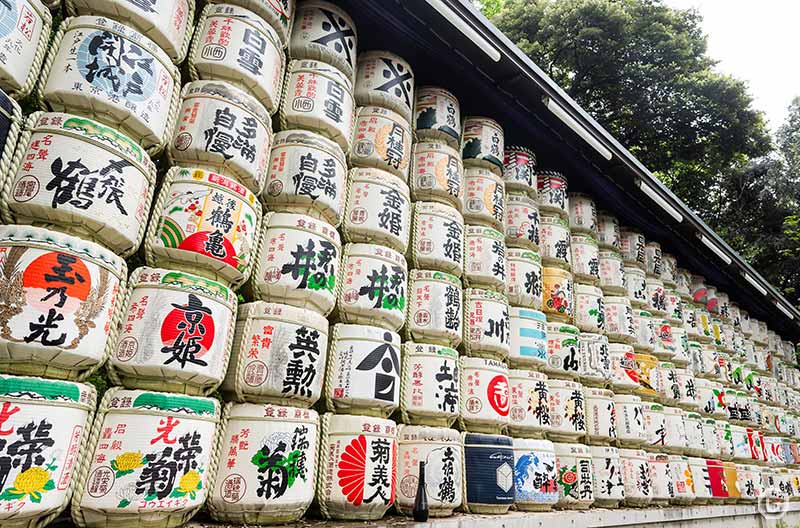
Sake dedicated to Meiji Jingu
About 60 wine barrels are exhibited on the opposite side of Minami-sando.
The wine barrels are displayed there because Emperor Meiji, who actively embraced Western culture, loved wine. Since it’s rare for wine to be donated to a shrine, it’s a unique sight at Meiji Jingu.
The massive torii gate welcomes all worshippers
Proceeding down the Minami-sando, visitors are greeted by what is called the “largest torii gate in Japan” leading to the main shrine buildings.
Meiji Jingu’s torii is a myōjin-torii style, where the uppermost part called the kasagi curves upwards toward the sky. This huge wooden myojin-torii stands 12 meters tall, reputedly the largest in Japan.
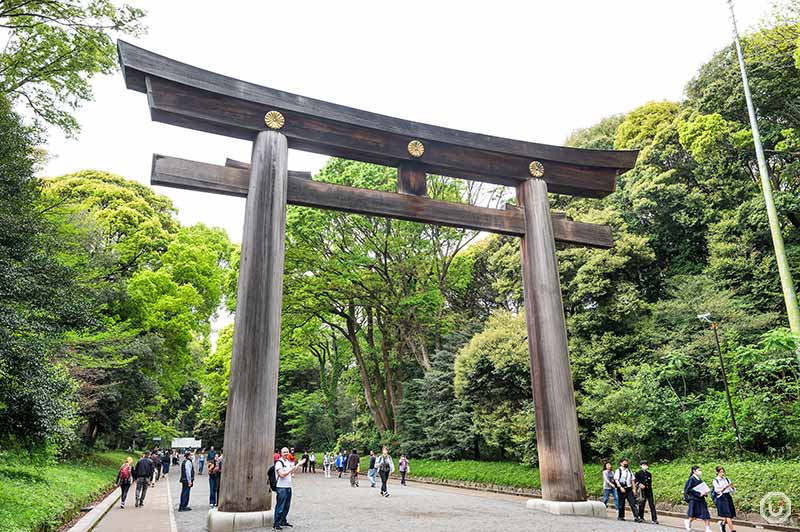
Meiji Jingu’s “largest torii gate in Japan”
Multilingual omikuji fortune slips available for international visitors
After passing under the giant torii gate, you’ll see the main shrine building. Purify yourself at the hand-washing pavilion, then you pay your respects properly.
The proper way to worship at Meiji Jingu is two bows, two hand claps, then one bow.
First offer a monetary donation, then bow twice. Next, put your hands together and clap twice, then pray silently before making one final deep bow.
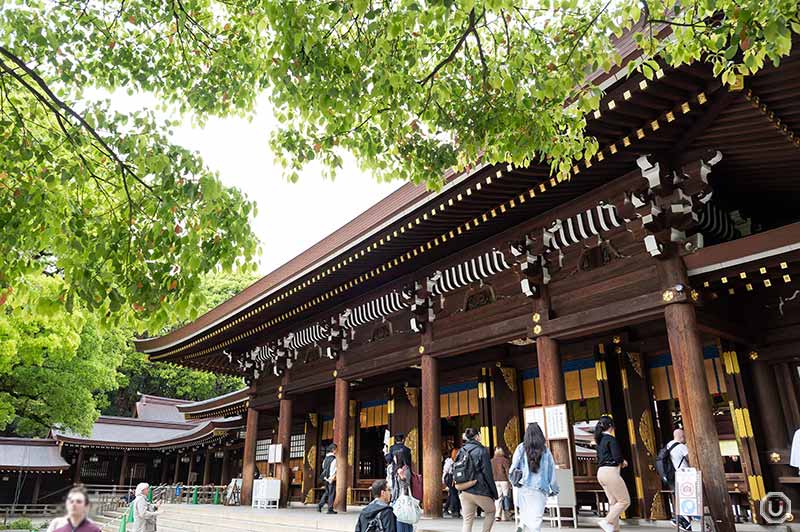
Meiji Jingu’s main shrine
After worship, you can draw an omikuji fortune slip or receive a goshuin shrine seal.
At Meiji Jingu, first deposit 100 yen, then draw out a numbered stick from the wooden ōmikokoro box. Find the correspondingly numbered drawer nearby and take out the fortune slip paper. Return the numbered stick to the box.
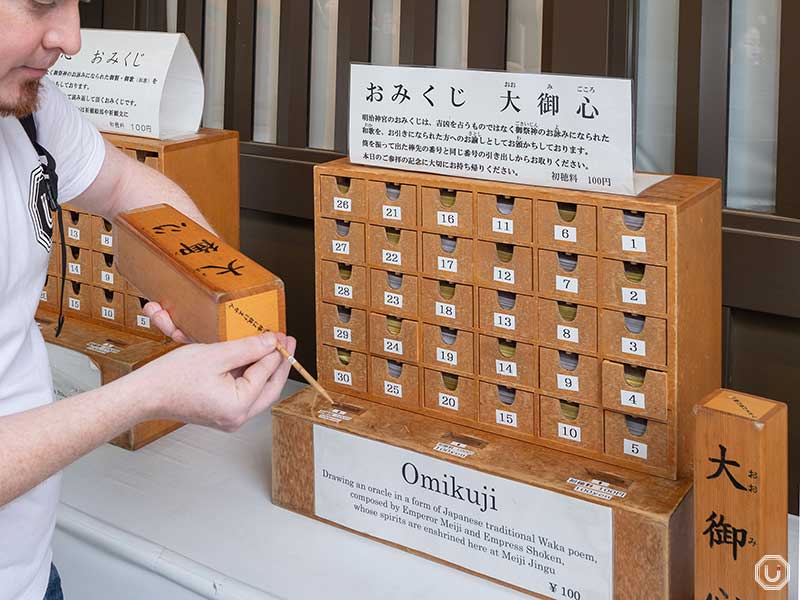
Return the stick to the box after you’ve drawn it out
Since Meiji Jingu has so many international visitors, the omikuji fortunes are also available in English. These include waka, Japanese poems found in classical literature.
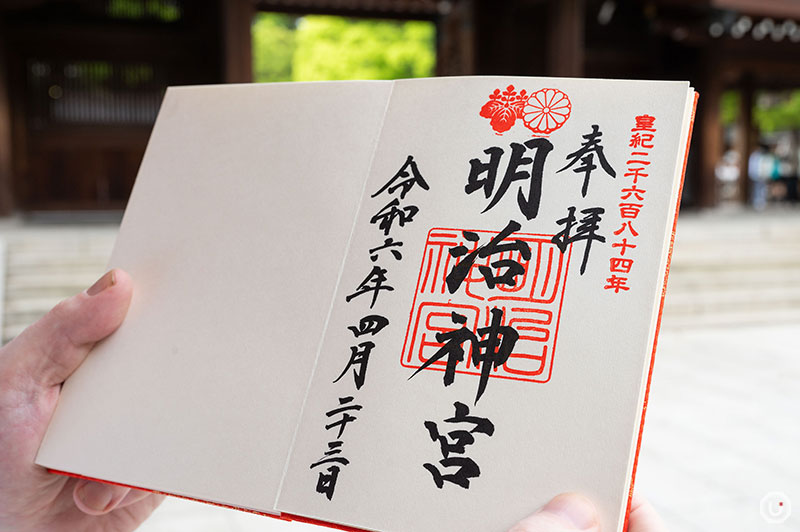
Meiji Jingu’s goshuin 500 JPY
Goshuin shrine seals at Meiji Jingu come in two varieties – one written directly into a goshuinchō (booklets for collecting goshuin seals), or pre-printed on paper. Getting it hand-written in a booklet takes about 2 minutes, but you need to bring your own booklet.
Meiji Jingu has their own booklets available as well!
Gorgeous gardens to enjoy in every season
Within the Meiji Jingu grounds is the Meiji Jingu Gyoen, or Inner Garden, which requires a 500 admission fee.
The garden is a great place to enjoy nature’s changing beauty through the seasons – wisteria and azaleas in spring, irises and water lilies in summer, fall foliage in autumn, and colorful berries and sasanqua camellia in winter.
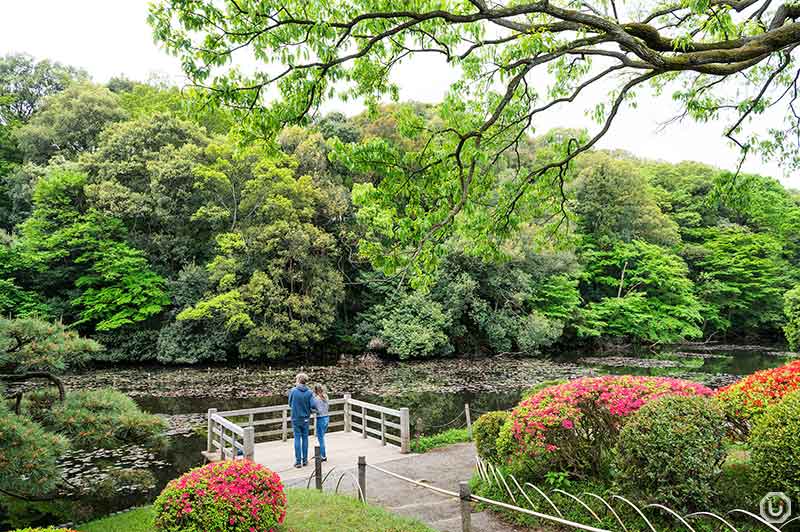
The Inner Garden at Meiji Jingu
When the Umami bites editorial team visited in April, the azaleas were in full bloom, creating a breathtaking scene of fresh greenery contrasted with vivid pink and red azalea blossoms.
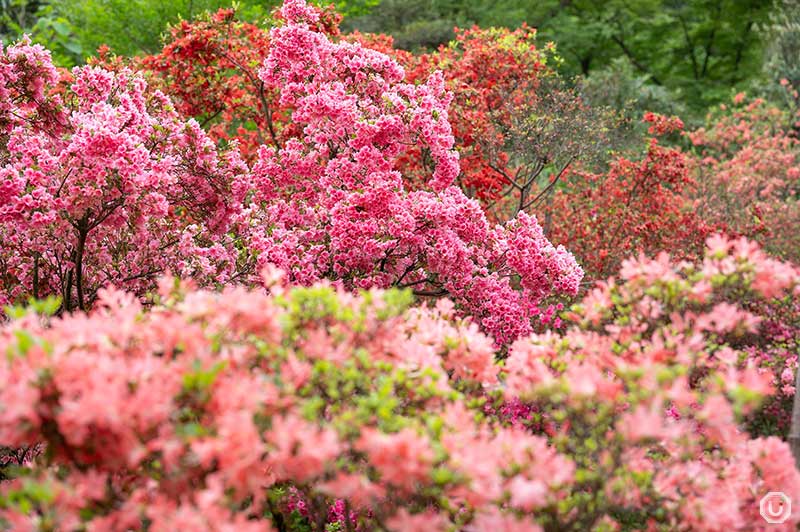
Azaelas are at their peak from April to May
The azaleas also form a fanciful tunnel of flowers, creating a can’t-miss photo opportunity.
Be sure to stop for a moment during your stroll and capture a picture of Japan’s seasonal beauty.
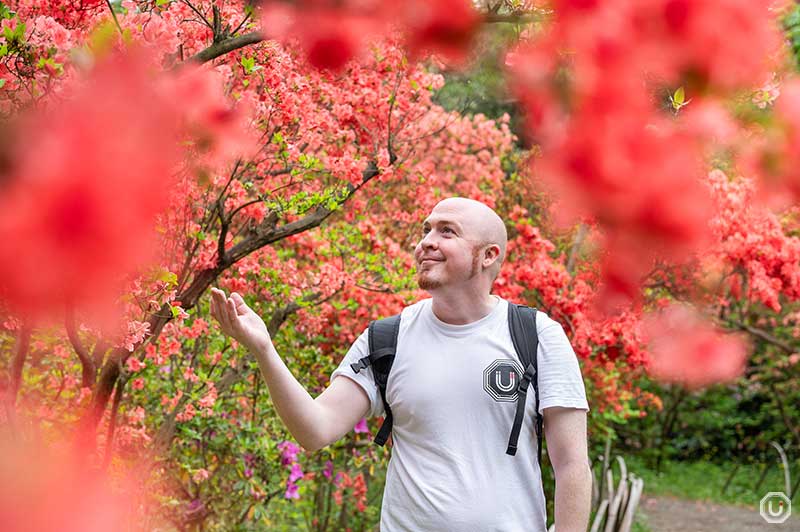
Beyond its beautiful natural scenery, the Inner Garden offers another attraction: Kiyomasa no Ido, Kiyomasa’s Well.
The well, which springs forth with clear water, is reputed be a spot that enhances good fortune.
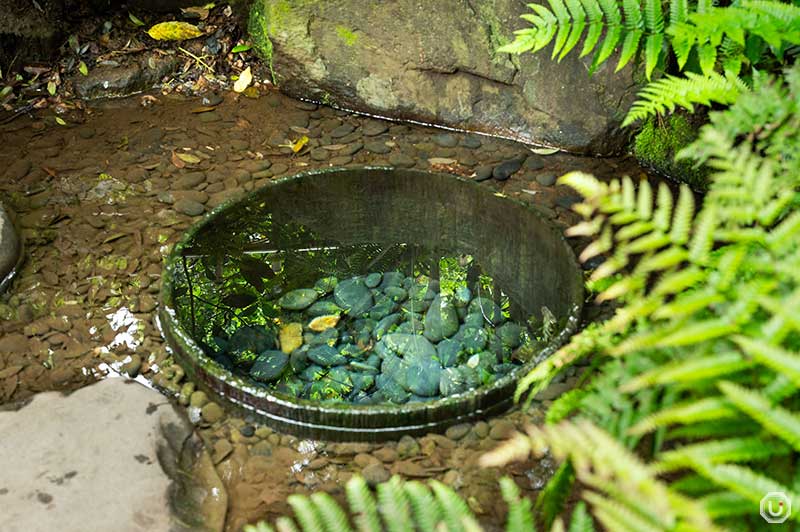
Kiyomasa’s Well at Meiji Jingu
In the past when it became popular, long lines formed to wait for a turn to stand before the well.
Please note that throwing coins into the well or trying to take the water home is prohibited at Meiji Jingu.
A museum that expands upon Meiji Jingu’s history
When visiting, be sure to stop by the Meiji Jingu Museum as well.
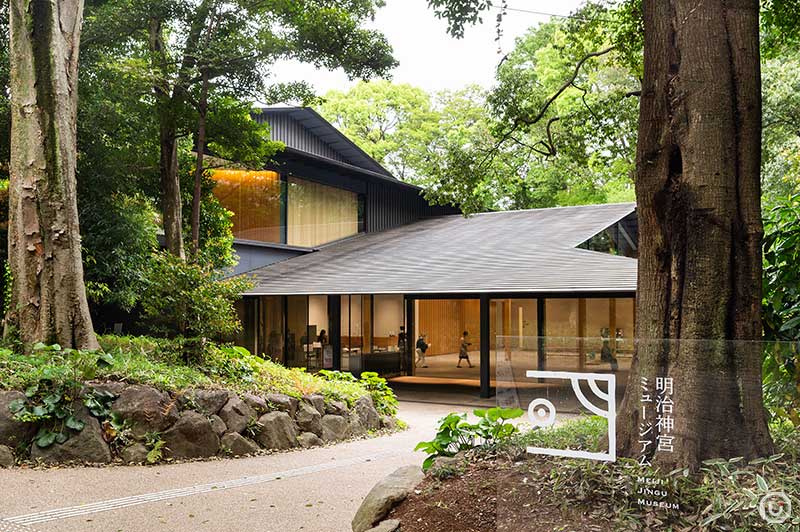
The exterior of Meiji Jingu Museum
The museum’s exhibits are divided between the first and second floors. The first floor covers the history of Meiji Jingu itself, while the second floor displays artifacts related to Emperor Meiji and Empress Shōken, as well as special exhibitions.
The museum is open 10:00 AM – 4:30 PM (last entry 4:00 PM), with a general admission of 1,000 yen. It’s a popular spot to learn about this historically significant site.
Please note that the museum is closed every Thursday, except when Thursday is a national holiday.
Dining and shopping at Meiji Jingu
A perfect rest stop during your shrine visit is the Forest Terrace Meiji Jingu.
Inside is the “CAFÉ ‘Mori Terrace 2nd,’” which opens from 9:00 AM, and is a great spot to enjoy a meal while you can take in the scenic beauty of the shrine grounds.
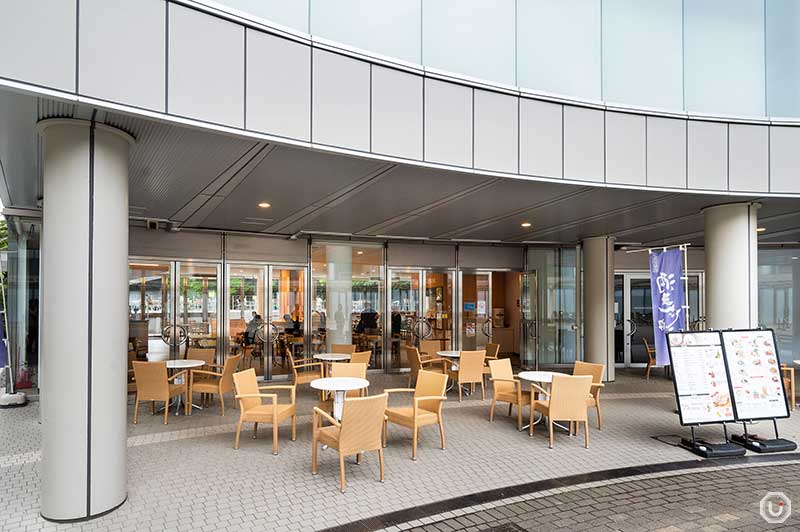
The exterior of CAFÉ “Mori Terrace 2nd”
The adjacent shop “souvenir MORI” offers a wide variety of Japanese gift items, with a focus traditional wares.
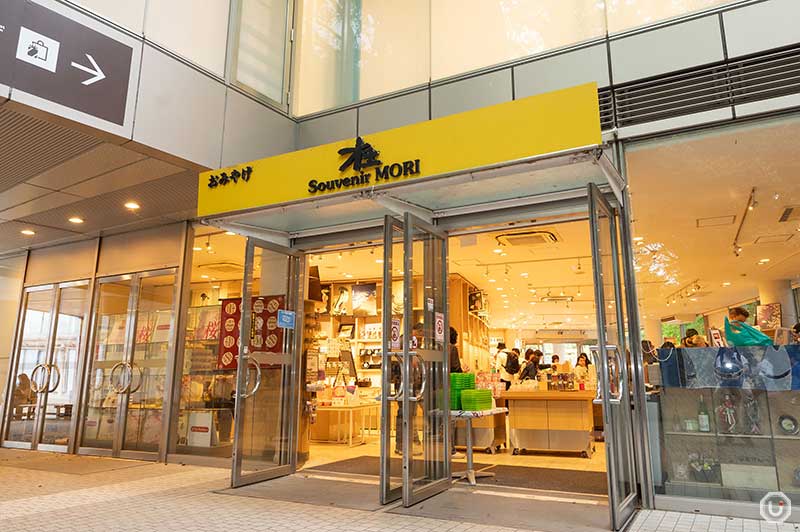
souvenir MORI provides many Japanese-style souvenirs
What’s the best time to visit Meiji Jingu?
Meiji Jingu cannot be visited at night because the gates leading to the grounds are sealed.
The opening times vary by month, with the earliest being 5:00 AM from May to August. The latest opening time is 6:40 AM from December to January.
To avoid crowds, it’s recommended to go in the early morning. Around 7:00 AM there are relatively few visitors, allowing you to pay your respects in the crisp morning air.
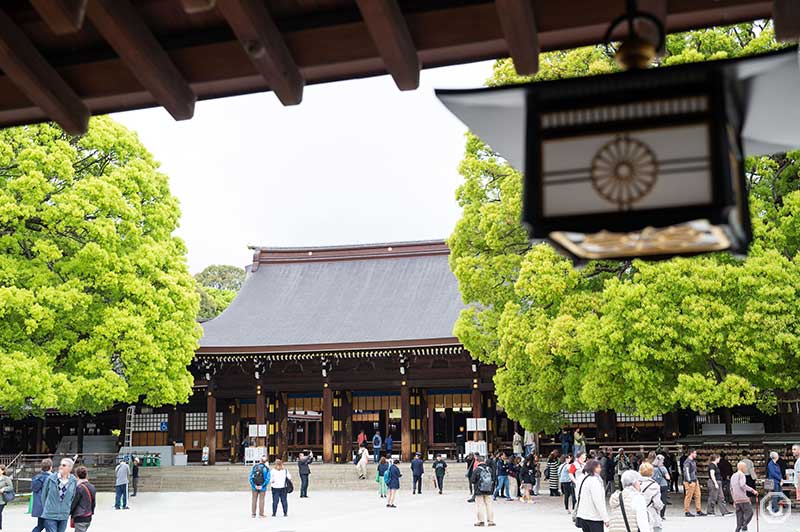
What we’ve introduced here is just a small sample – by visiting in person, you’ll be able to discover Meiji Jingu’s diverse charms for yourself.
Highly accessible yet an oasis of nature in central Tokyo, Meiji Jingu is a must-see destination when traveling to Japan.
Shrine information
| Name | 明治神宮 Meiji Jingu |
|---|---|
| Address | 1-1 Yoyogi-Kamizonocho, Shibuya-ku, Tokyo
|
| Access |
Harajuku Station Short walk from Harajuku Station West Exit
Meiji-jingumae ‘Harajuku’ Station Short walk from Exit 2 Sangūbashi Station 2-minute walk from Sangūbashi Station East Exit Kita-sando Station 5-minute walk from Exit 3 Yoyogi Station 6-minute walk from Yoyogi Station West Exit |
| Phone number | 03-3379-5511 |
| Visiting hours |
|
| Sacred items | Available from opening until closing |
| Goshuin | Goshuin seal inscription into goshuincho is available until 17:00; pre-written goshuin seals are available until closing |
| Omikuji | Available from opening until closing |
| Admission | Free there are facilities that require an additional entrance fee |
| Official website | https://www.meijijingu.or.jp/ |
| Other information |
|
※The information in this article is current as of April 2024.
